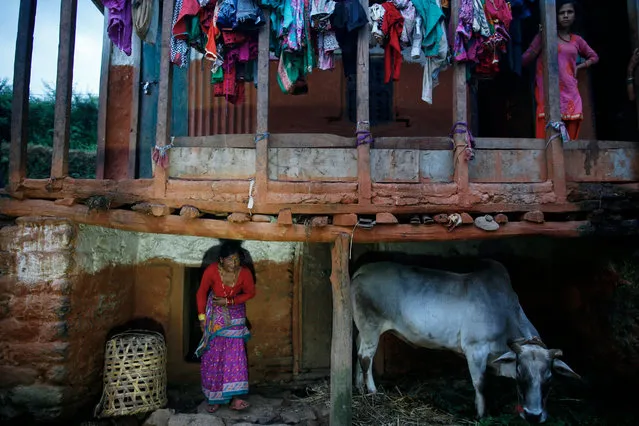
Laxmi Bhandari comes out of a “Chaupadi” room on an early morning Mangalsen village in Acham district, Nepal, 17 September 2017. Laxmi uses a small separate room in her own home during her monthly menstruation. “Living in a separate room in your own home is much safer than living in a Chaupadi shed which is set up separately outside one's home”, says a social mobilizer who campaigns to end the practice. “Chaupadi Pratha” is an ancient social tradition in Nepal that banishes girls and women from their home to makeshift sheds and huts during their menstruation period. The custom is practiced by religious Hindu communities in some districts of western Nepal, especially in the far western Accham district, which is located 424 kilometers from the capital of Kathmandu. Girls and women are forced to stay in small huts or sheds built away from their homes, or even caves, for seven to nine days during their monthly period in following with the centuries-old ritual. They are also prohibited to participate in normal daily activities as they are considered “impure”. (Photo by Narendra Shrestha/EPA/EFE)
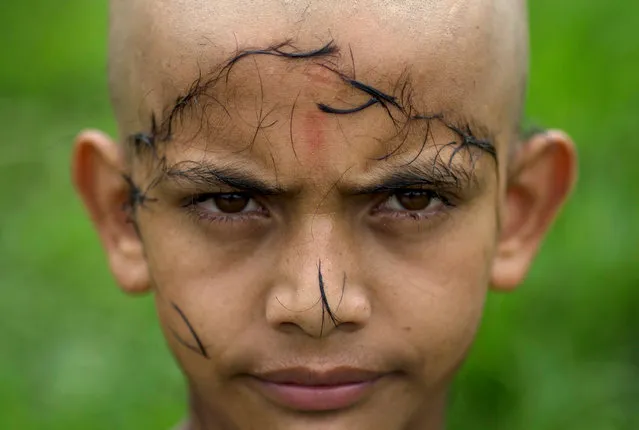
Sabin Parajuli, student of “Bhagwat Sanyash Ashram and Gurkul”, looks on after shaving his head during a full moon day in Gurukul’s premise in Kathmandu, Nepal, 27 July 2017. Once a month, in the auspicious day of full moon, the students must shave their head since they believe that by shaving the hair they are free from the sins. A temple in Nepal’s capital Kathmandu is home to one of the world’s oldest Sanskrit schools. Located within Pashupati Temple and founded in 2040 BS (Nepali Year Calendar), 34 years ago, Shree Bhagwat Sanyash Ashram and Gurukul School and hostel is funded by the donations of Hindu followers. The school was established to practice and preserve the Sanskrit Dharma-shastra. Sanskrit is the main holy language in Hinduism and Dharma-shastras are Hindu scriptures teaching the rules of social behavior. (Photo by Narendra Shrestha/EPA/EFE)
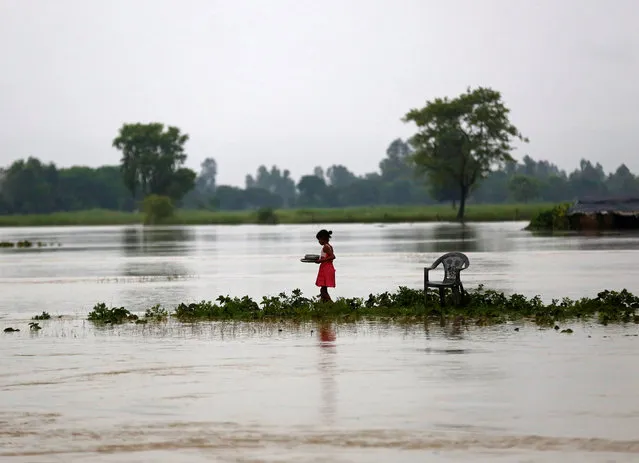
A girl carrying dishes walks along a flooded area in Janakpur, Nepal August 13, 2017. (Photo by Navesh Chitrakar/Reuters)
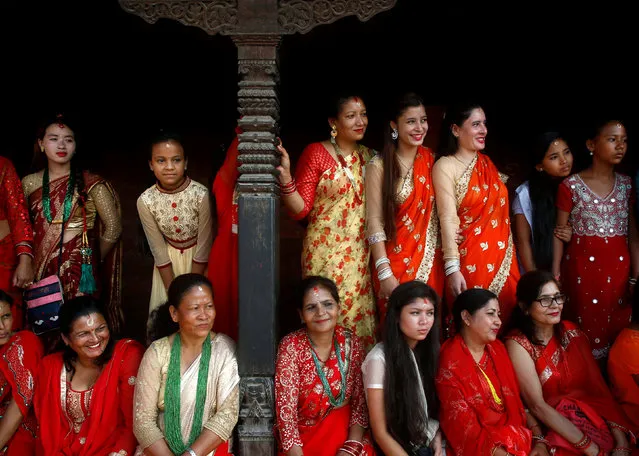
People watch as women sing and dance at the premises of Pashupatinath Temple during the Teej festival in Kathmandu, Nepal August 24, 2017. (Photo by Navesh Chitrakar/Reuters)
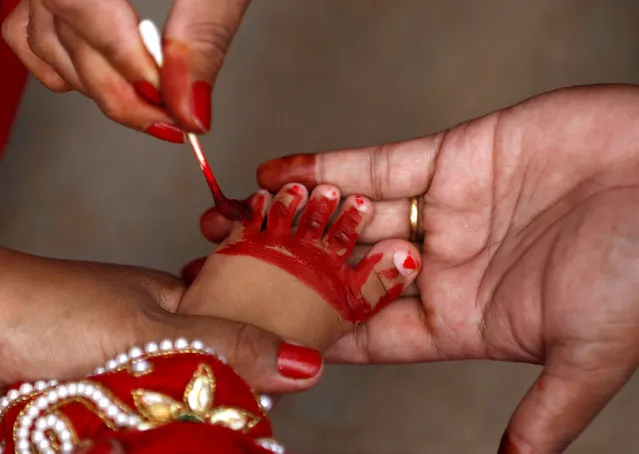
The foot of a young girl dressed as the Living Goddess Kumari is painted red as part of the rituals during the Kumari Puja festival, in which young girls pose as the Living Goddess Kumari and are worshipped by people in belief that their children will remain healthy, in Kathmandu, Nepal September 4, 2017. (Photo by Navesh Chitrakar/Reuters)
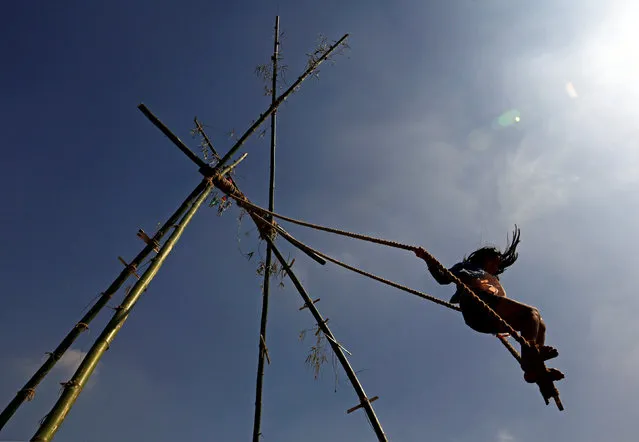
A girl plays on a traditional swing during Dashain, the biggest religious festival for Hindus in Nepal, in Kathmandu, Nepal September 24, 2017. (Photo by Navesh Chitrakar/Reuters)
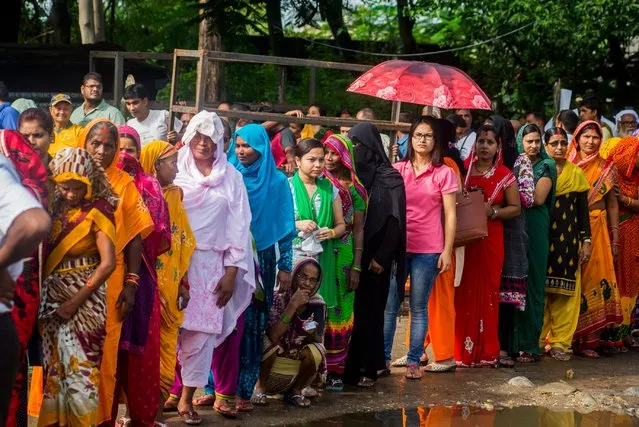
Nepali voters queue before casting their ballots during the third phase of the Nepalese local elections at a polling station at Birgunj Parsa district, some 150kms south of Kathmandu on September 18, 2017. Polls opened in Nepal on September 18 for the final phase of local polls, the first in nearly two decades and a key step in the country's post-war transition to a federal democracy. Most of the country has already voted in the landmark polls but the vote was repeatedly delayed in one province of Nepal's southern plains, which was the epicentre of deadly ethnic protests two years ago. (Photo by Manish Paudel/AFP Photo)
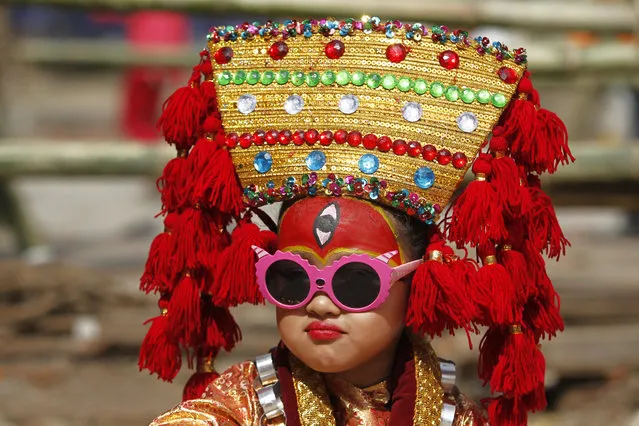
A Nepalese girl dressed as living goddess Kumari waits for Kumari Puja at Hanuman Dhoka, Basantapur Durbar Square in Kathmandu, Nepal, Monday, September 4, 2017. Girls under the age of nine gathered for the Kumari puja, a tradition of worshiping young prepubescent girls as manifestations of the divine female energy. The ritual holds a strong religious significance in the Newar community that seeks divine blessings to save small girls from diseases and bad luck in the years to come. (Photo by Niranjan Shrestha/AP Photo)
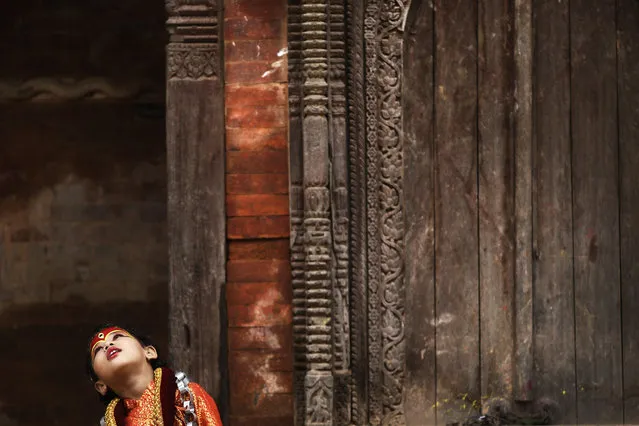
A Nepalese girl dressed as living goddess Kumari waits for Kumari Puja to start at Hanuman Dhoka, Basantapur Durbar Square in Kathmandu, Nepal, Monday, September 4, 2017. (Photo by Niranjan Shrestha/AP Photo)
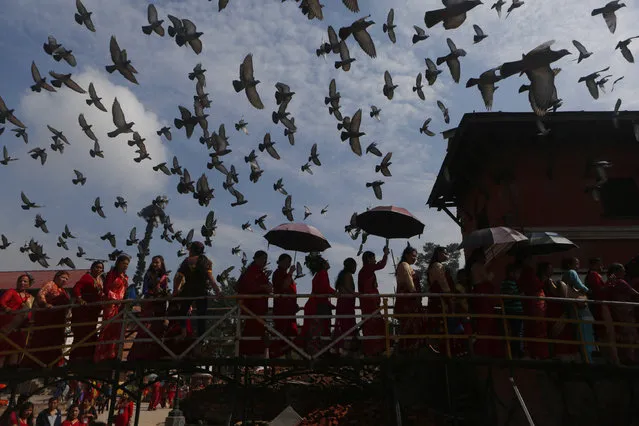
Nepalese Hindu women stand in a queue to enter the Pashupatinath temple to offer prayers during Teej festival celebrations in Kathmandu, Nepal, Thursday, August 24, 2017. During the festival, Nepalese Hindu women observe a day-long fast and pray for their husbands and for a happy married life. Those who are unmarried pray for a good husband. (Photo by Niranjan Shrestha/AP Photo)
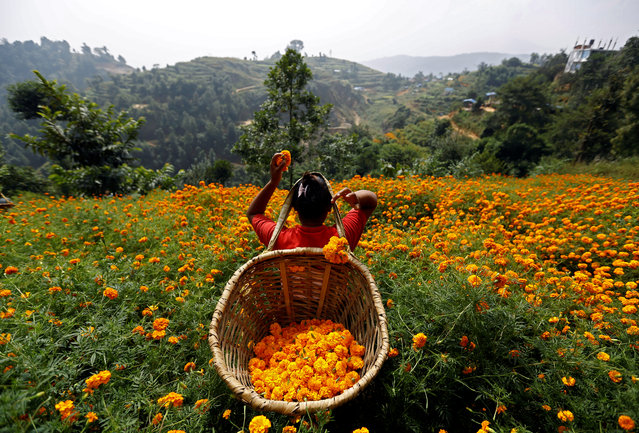
A woman picks marigold flowers used to make garlands and offer prayers, before selling them to the market for the Tihar festival, also called Diwali, in Kathmandu, Nepal October 17, 2017. (Photo by Navesh Chitrakar/Reuters)
18 Oct 2017 09:07:00,
post received
0 comments
